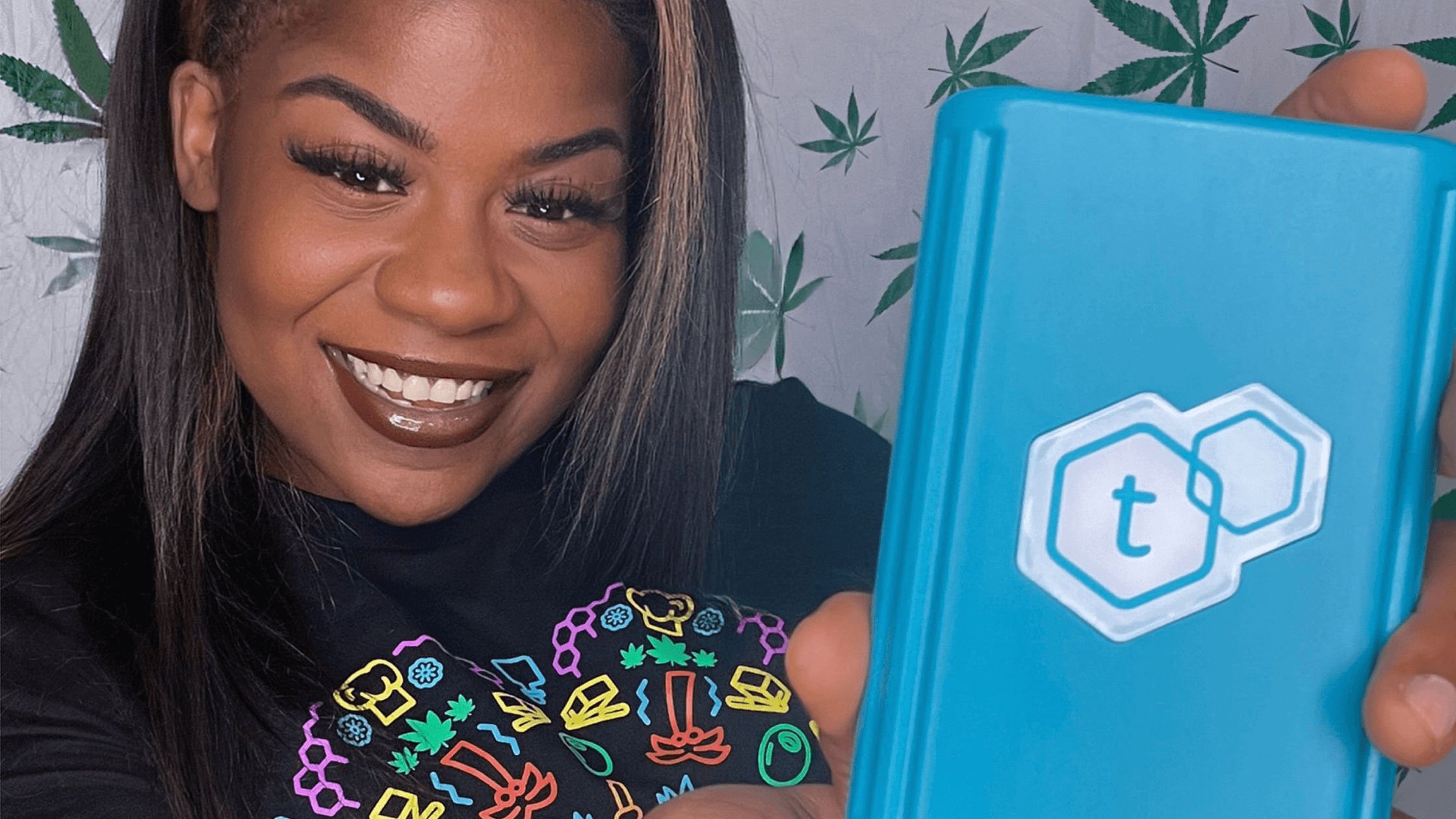If you're new to decrarbing cannabis at home, it may feel slightly intimidating. Don't stress, we'll show you four easy ways to decarb your cannabis at home!
Back in the day, many home cooks simply ground weed into a fine powder, tossed it in with a couple of ingredients, and baked Alice B. Toklas brownies without any thought of decarbing the buds.
But times have changed, and our methods for making cannabis edibles at home have evolved. We now know that putting our cannabis through the process of decarboxylation and making infusions creates much more tasty and potent edibles. Decarbing cannabis not only makes edibles stronger, but it means we won’t need to use as much bud, and we can save a considerable amount of money.
What is Decarboxylation?
Decarboxylation, or decarbing, converts the acidic forms of cannabinoids into molecules that the human body can metabolize. On the molecular level, the process of decarboxylation removes a carboxyl group (COOH) from the cannabinoid.
For instance, while the primary psychoactive ingredient in typical cannabis plants, delta-9 tetrahydrocannabinol (THC), remains in the raw buds, the molecule exists as THCA. Decarbing the flowers turns THCA into useable THC. Likewise, cannabidiol (CBD) exists in the form of CBDA before decarbing hemp flower.
With a name like decarboxylation, you might think that preparing your buds for edibles is a complicated scientific process. Luckily, decarbing your buds is as easy as adding consistent and even heat for a relatively short period of time. When you smoke or vape cannabis, you’re decarbing your buds automatically. But when you plan to make edibles, you’ll need to decarb your flower ahead of time before creating your infusions.
The Most Common Way to Decarboxylate Cannabis at Home
While there are several procedures you can use to decarb your cannabis at home, the best way to decarboxylate cannabis at home is with an ordinary oven. A toaster oven will also work if you don’t have a full-sized model. However, you may need to decarb your buds in a couple of batches, depending on the amount of cannabis you’ll need.
Decarboxylate Cannabis Materials:
- Cookie sheet or shallow, oven-safe glass dish
- High-THC cannabis or hemp flowers
- Parchment paper, if desired
- Oven mitts or pot holders
- Glass storage container with a tight-fitting lid
Decarboxylate Cannabis Procedure:
- Preheat the oven to around 225℉. If you have an older stove, you may want to use an additional hanging thermometer to make sure your oven is calibrated correctly.
- Remove any large stems and seeds before breaking the herb into small chunks. Some people grind the cannabis, but grinding may increase the risk of burning the buds.
- Spread the cannabis evenly on a cookie sheet or an oven-safe baking dish. You can line the surface with parchment paper to make for easy clean-up.
- Bake the flower in the oven for at least 60 minutes or until the buds turn from bright green to slightly brown. Check the cannabis every 15 minutes to make sure it doesn’t burn. If you detect any burnt odor, turn the oven down a few degrees.
- Once your buds have an even golden brown color, remove the tray from the oven.
- After the cannabis cools for around 20 minutes, transfer your buds into a tightly sealed glass jar for storage. Keep your decarbed buds in a cool, dark area until you’re ready to make your edibles.
Decarbing Cannabis in a Heat-Proof Canning Jar
Materials for Mason Jar Decarbing Cannabis:
- Heat-proof canning jar with a tight-fitting lid
- Cookie sheet or shallow glass baking tray
- Hemp or traditional cannabis flower
- Oven mitts or pot holders
- Moistened kitchen towel
Procedure for Mason Jar Decarbing Cannabis:
- Preheat the oven to around 225℉.
- Break the cannabis into small chunks and fill the jar no more than ⅔ full. You can also lightly grind the flowers if you plan to use the same jar for your infusion.
- Line the baking tray with the slightly moistened and folded towel.
- Place the jar on its side on top of the towel. The towel will keep the jar from rolling around.
- Bake the buds for at least 60 minutes. Check the jar every 20 minutes and lightly shake the mixture to ensure an even decarb. Don’t forget to use your oven mitts, so you don’t get burned!
- Remove the tray from the oven after around an hour, and let it cool before proceeding to make your infusion.
Sous Vide Decarboxylation
The sous vide method requires an initial investment for an immersion circulator, but it’s a fantastic decarb method for people who plan to make many batches of edibles. The sous vide decarb presents a distinct advantage by allowing you to preserve maximum terpenes and prepare your cannabis more discreetly than with any other method.
A high-quality immersion circulator costs around $200, but you can also use the device to prepare precisely cooked eggs or chicken for your regular meals. You’ll also need a container for your device. Some sous vide machines come with containers with liquid measurement markings. If your immersion circulator doesn’t include a container, you can use a large cooking pot or plastic tub.
Materials for Sous Vide Decarbing:
- Sous vide machine (immersion circulator)
- Container
- Large plastic freezer bag or vacuum sealer kit
- Marijuana or hemp flower
Procedure for Sous Vide Decarbing:
- Grind your herb into a fine powder in a coffee grinder. Grinding the cannabis maximizes the surface area, and you don’t need to be concerned about burning the buds with the sous vide method. Wait a few moments before opening the lid to ensure that the trichomes settle back into the ground bud. You may also want to scrape any powder from the inside of the grinder.
- Fill the container with hot tap water according to the manufacturer’s instructions for your immersion circulator. Preheat your sous vide device to around 200℉.
- Put the ground buds in a freezer bag, squeezing out as much of the air as possible. Use a vacuum sealer if you have one. The buds should make a tight and flat layer in the bag.
- Seal the bag and place it into the sous vide container with the water. Allow the mixture to heat for at least 90 minutes before removing it from the water bath. When the bag is cool enough to handle, dry the outside. Empty the decarbed cannabis into a tightly-sealed, glass container and store it in a cool, dark place until you’re ready to make your infusions.
Decarbing Cannabis in the Microwave
Decarbing cannabis in the microwave isn’t the most ideal method. But if you’re short on time, microwave decarboxylation will do the trick. However, you’ll have to keep a close eye on your buds as they can burn quickly in a microwave. You may want to start with a small test batch so that you can get the timing right.
Here’s the Microwave Decarbing procedure:
- Grind or break up your cannabis by hand.
- Spread your herb evenly into a microwave-proof glass dish.
- Microwave the buds on medium for around 90 seconds.
- Mix the cannabis in the bowl and zap it for another 60 seconds.
- The finished buds should be golden brown but not charred.
So, there you have it, four easy ways to decarboxylate cannabis at home. Now you’re ready to make butter and oil infusions for your edibles or even tinctures for topicals.
Know the strength of your buds from start to finish. Take your your infusions further by getting to know your bud better! For best results, use tCheck’s handy potency tester to determine the precise amount of THC or CBD in your final infusions.









